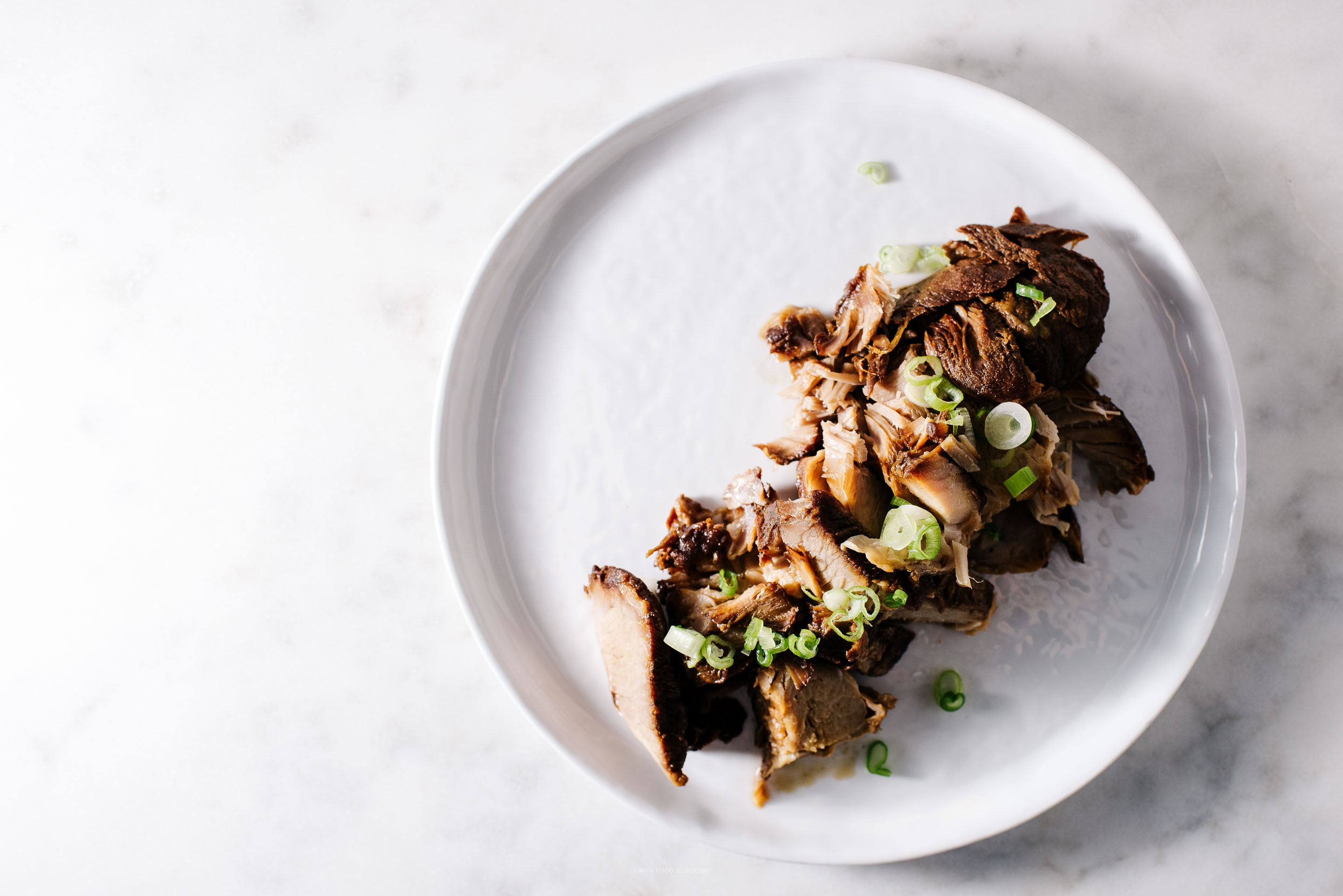
I get absurdly nostalgic around the holidays, even for things that happened just a year or two ago. I feel just as much for the memories formed just a short while ago (as short as last week!) as I feel for cherished, barely remembered childhood memories. I’m the sentimental sort – I cry at happy/sad commercials, I’m constantly taking photos in order to commemorate the everyday, and I am always reminiscing, sometimes even in the moment.
I’m pretty sure my sentimentality partially has to do my love of food. There’s something so visceral about the feelings and memories that flood back when you smell something familiar, or taste something strongly tied to a place or time. For the past two years Mike and I have spent Christmas in Tokyo, and now, because of all those bowls of ramen we ate, the smell and taste of slow braised Japanese chashu instantly bring me back to a Japanese Christmas-y feeling. The steamy windows of my favorite tiny ramen shop, the welcome enveloping smell of the broth, and the hot delicious bowls of noodles topped with chashu are pure comfort.
Chashu comes in all shapes and sizes, probably because the Japanese adapted it from char siu, Chinese barbecue pork. They don’t look anything alike because they aren’t: char siu is roasted, whereas chashu is braised. Because it’s one of those recipes that’s been adapted, there are lot of takes on it – you usually see it in rounds, but sometimes you’ll see it as irregular-shaped slices too. And it’s not just it’s shape that differs, the cut of meat does too. You’ll find it made with pork belly, which is super common, or with pork butt/shoulder. They even do chicken chashu as well!
I ended up using shoulder for this recipe and the chashu ended up super flavorful, soft, and fork tender. It was possibly the easiest piece of meat I ever did cook. It isn’t seared because you don’t want that typical crust you get with a braise; what you want is salty-sweet, melt-in-your-mouth pieces of meat. Trust me when I say you can eat heaps of it, along with the braising liquid, on fluffy white rice. It’s true comfort food.
I’m going to have some recipes featuring this pork later on this month, but in the mean time, you can use it to top off your breakfast ramen with chashu, use it in yakiudon, or add it to your fried rice.
PS – This is the first item in a giveaway series: I’m giving away a Staub 4 quart round cocotte! It’s the perfect vessel for making this chashu or other braises. I absolutely love mine and am super excited to be giving one away to a lucky reader. Only thing is, I’m not giving it away yet. Check back here in a couple of days when I’ll announce another giveaway item. It’s kind of like a little giveaway advent – there are five items in all and it’s a pretty exciting bundle!
Update: Enter the giveaway right here!
Slow Braised Japanese Chashu Pork Recipe
serves 4-6
- 2-3 pounds pork shoulder
- 1/2 cup soy sauce*
- 1 cup mirin
- 1 cup sake
- 1/4 cup sugar
- 6-8 cloves garlic, crushed
- 4-5 green onions
- 2 inch piece of ginger, peeled and sliced
- 2 small shallots, halved
Preheat the oven to 250°F.
Place all of the ingredients in a large, heavy-bottomed, oven safe cocotte and bring to a gentle boil over medium heat. When the mix comes to boil, cover with the lid and place in the oven and cook for minimum 4 hours, up to 6, flipping pork occasionally. The pork should be super tender.
Remove the pork from the sauce and, gently slice. Serve atop rice with sliced green onions, or use as a topping for ramen, or in steamed buns. Reserve the liquid to use as sauce over noodles or rice, if desired.
Note: You can either cut the pork shoulder into smaller pieces or leave it whole. I tend to cut it if I’m planning on serving it in buns or on noodles.
I used light soy sauce (usukuchi) here.
If you want a cleaner slice, remove the aromatics from the braising liquid. Chill the meat, in the liquid in the fridge. The next day, the chilled chashu will be a lot easier to slice.
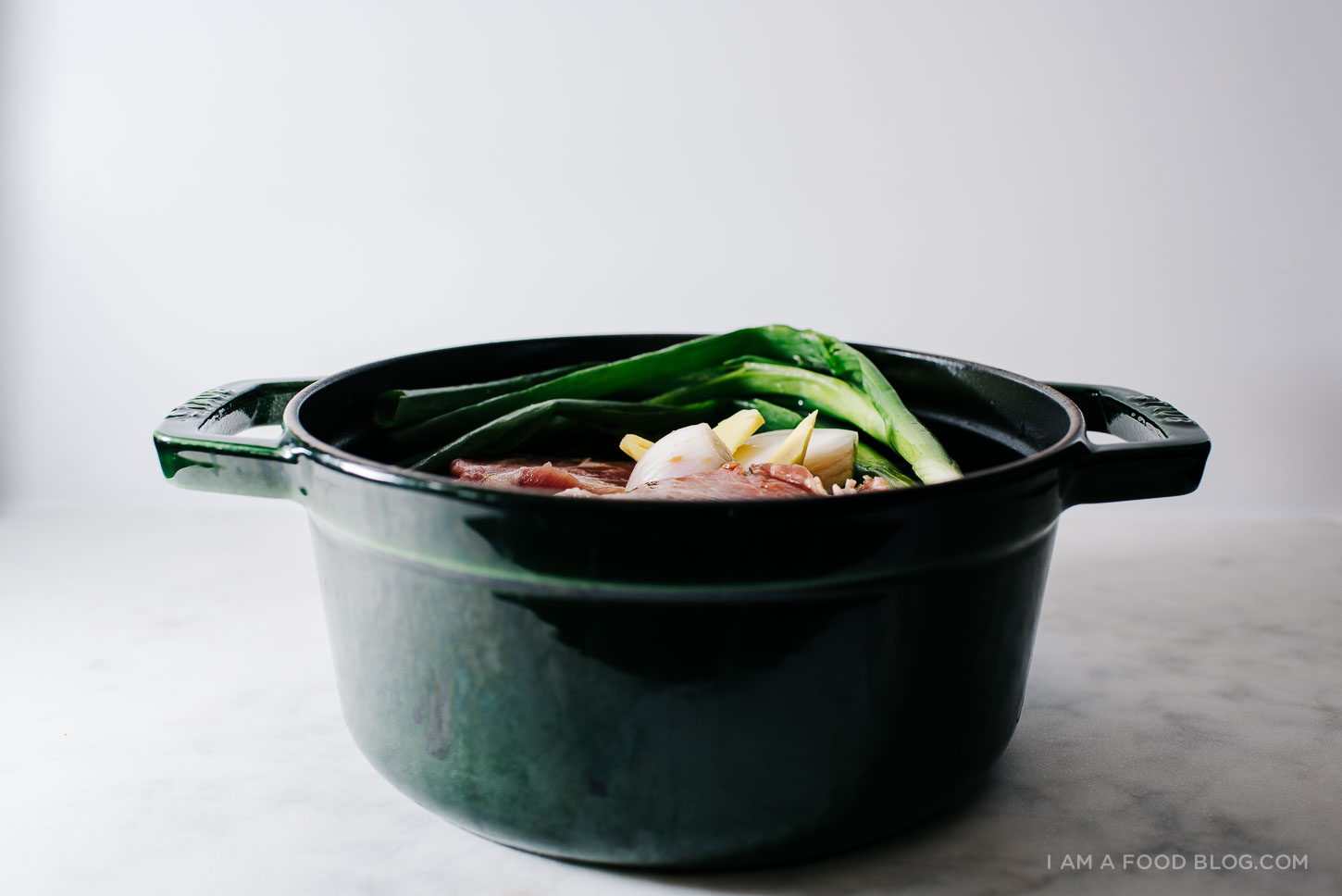

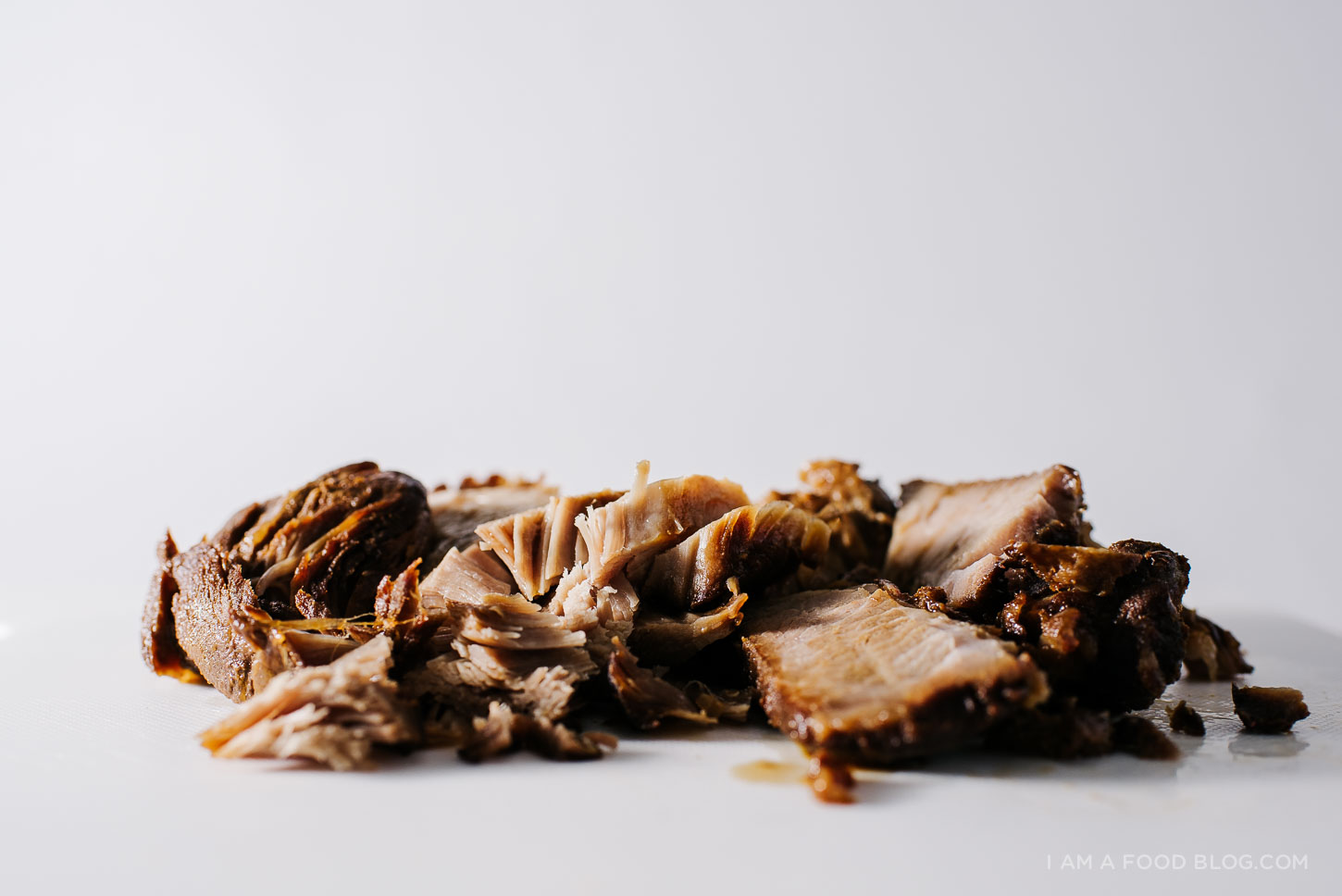
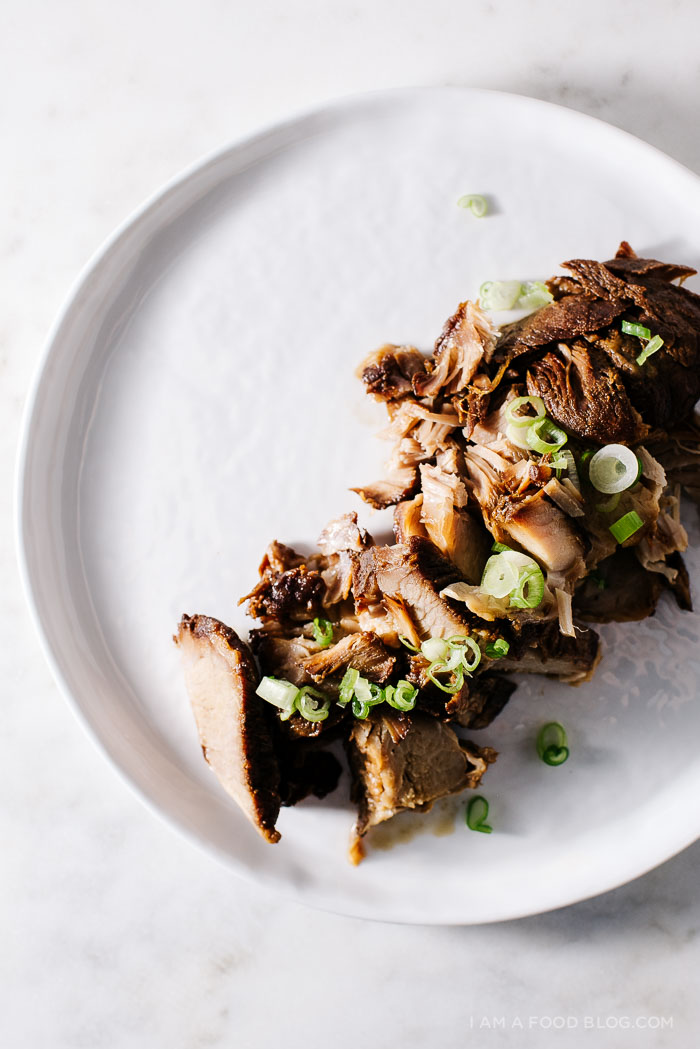
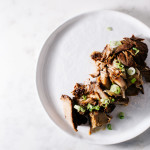
I’m not sure if you know the answer to this, but would you able to substitute Chinese Shaoxing cooking wine for the sake in this recipe? I usually do that when I make teriyaki, but this recipe calls for a full cup…
I made this over the weekend and it was amazing! Thank you for the recipe. Gonna use some leftovers for stir fry – I hope that’s not sacrilege :)
I’m wondering if I were to do this sous vide with pork tenderloin and adding everything to the bag I could achieve something similar.
i think that would work – might be too much liquid though, maybe try reducing the liquid first? let me know how it works out!
They came out great, the recipe exactly as is! Threw some flour tortillas on the burner and enjoyed fusion carnitas!
Hi Steph! I get sentimental about things during the holidays too and braising meat is one of them! I have everything for this recipe except the sake, and right now there is a blizzard here and I don’t want to brave the icy roads to go to the store! Do you think it would come out right if I just put in more mirin, maybe diluted a little with water?
Can this be made in a crock pot? Thanks!
i haven’t tried but i think it would definitely work in a crock pot!
I made it in a crockpot! It was amazing! :)
yay! so happy you liked it :)
How long did you do it in the crock pot and at what heat? Thanks!
If I were to double or triple the recipe, does the cooking time remain the same?
Made this yesterday. Sooooo good!
yay!! so happy you like it! :)
Made this last night while snowed in. It turned out amaaaazing! Had it over ramen but we’re going to try it over rice with egg and some green onion slices. Thank you for the recipe! Can’t wait to try your other ones.
Hi, just wondering if mirin/sake can be replaced with shaoxing wine? Thanks!
i haven’t tried, but i think it could, but might be a bit wine-y tasting? if you like the flavor of shaoxing wine, i say go for it! let me know how it turns out :)